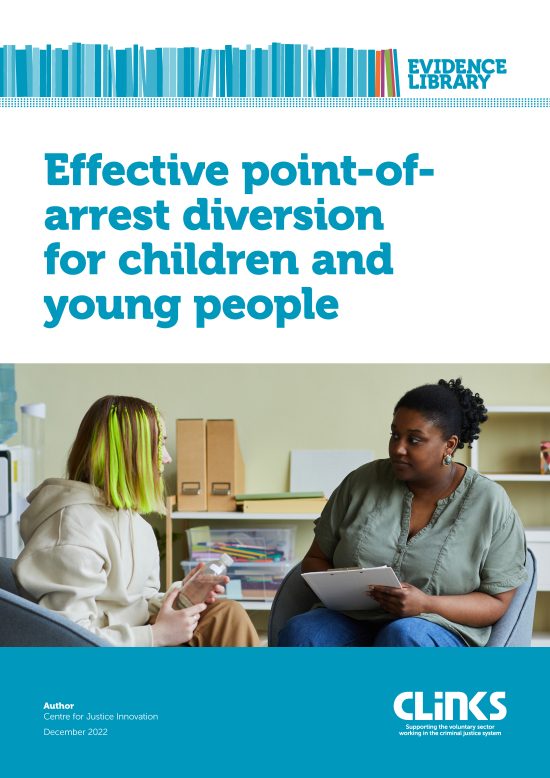
Effective point-of-arrest diversion for children and young people
Why read this evidence review?
Some children come into contact with the law and most are simply doing what comes naturally to them - pushing boundaries, making choices without thinking through the consequences, acting up among their peers. They may also be the victims of exploitation.
Unfortunately, the consequences of being caught, arrested and convicted can be serious. For these children this affects future education and employment opportunities, and it can have a backfire effect, making children and young people more, not less, likely to reoffend.
The evidence shows that point-of-arrest youth diversion is a better way of addressing low-level criminal behaviour. Moreover, in line with the Youth Justice Board’s ‘Child First’ strategy, point-of-arrest youth diversion is vital to the prioritisation of the child’s needs, enabling a fairer youth justice system.
Written by the team at the Centre for Justice Innovation, this review provides:
- A summary of the evidence on the harms caused by formal criminal justice system involvement for children and young people
- A definition of what point-of-arrest youth diversion for children and young people is
- An overview of the evidence base for point-of-arrest youth diversion
- Good practice principles for point-of-arrest youth diversion
- An overview of the latest research on point-of-arrest youth diversion and minoritised children and young people
- A summary of current practice and policy on point-of-arrest youth diversion.
An online evidence base for the voluntary sector working in the criminal justice system
This article forms part of a series from Clinks, created to develop a far-reaching and accessible evidence base covering the most common types of activity undertaken within the criminal justice system. There are two main aims of this online series:
- To increase the extent to which the voluntary sector bases its services on the available evidence base
- To encourage commissioners to award contracts to organisations delivering an evidence-based approach.
Each article has been written by a leading academic with particular expertise on the topic in question. The topics are selected by Clinks’ members as areas of priority interest. Clinks intends to build a comprehensive directory of the best evidence available across a wide range of criminal justice topics within the next three years (2020-2023). The online evidence base is co-ordinated by Russell Webster on behalf of Clinks.
Click here to find out more about the Evidence library.
Want to find out more about this topic?
Part of the 'A matter of fact: what the evidence tells us' series, to accompany our Evidence library, Clinks is giving you the chance to hear from the experts themselves. Bami Jolaoso and Carmen Robin-D’Cruz from the Centre of Justice Innovation, provide an overview of the evidence base for point-of-arrest youth diversion.
Watch the video recording below: